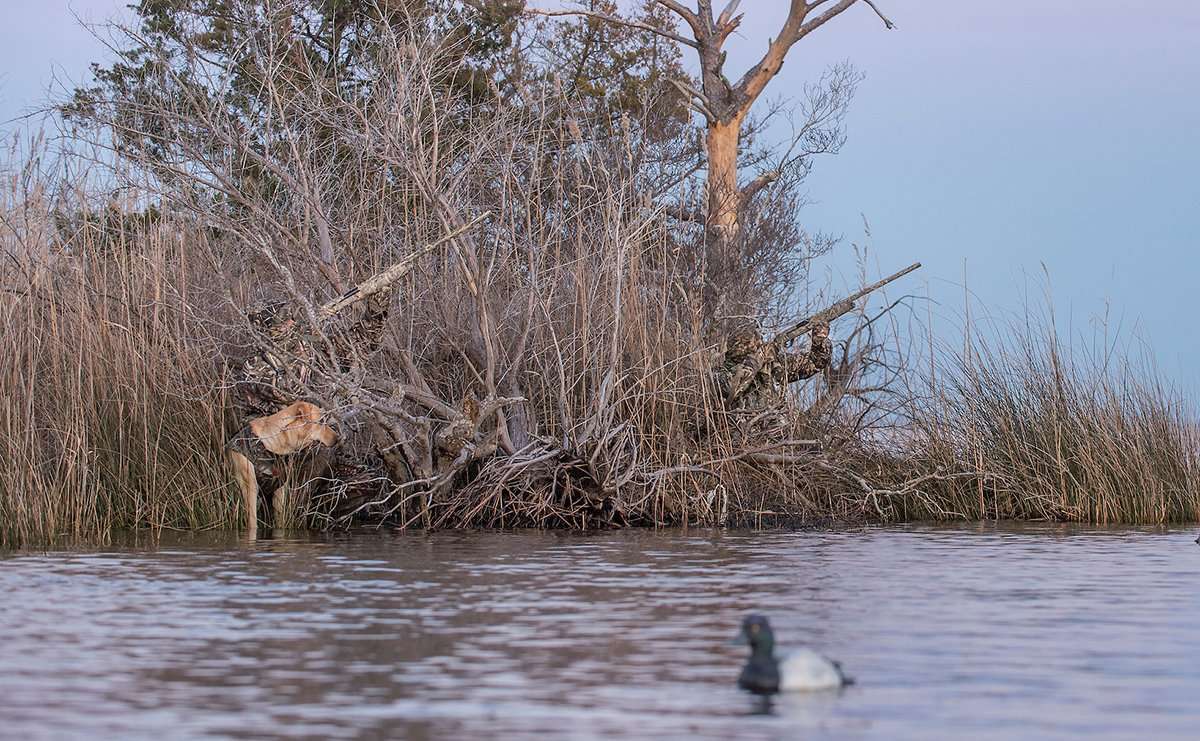Duck Numbers Good, Weather Forecast Appears Promising
Date: Dec. 14, 2017
Location: flyway-wide
Summary
Best I can tell, this year's November lull in southwestern Washington didn't come in November. Instead, she waited until the first week of December. When she arrived, though, she came with a vengeance. Part of it's easy to explain with the lack of seasonal water in this corner of the state. I know I should be careful what I wish for, but a bit of sheet water would be nice. The first two weeks of December have been strangely dry here, with no rain. The rivers are low, and the birds have been spending time on saltwater, the Columbia River and, well, places that don't dry up. There really haven't been that many ducks around the past couple of weeks, but that appears to have changed earlier this week. A drive eastward toward Vancouver and Portland, Oregon, showed an increase in the number of ducks; a mix of mallards, wigeon, some pintails and a good number of gray ducks. Geese remain a mystery, with their whereabouts unknown. But that, too, I reckon, is about to change, not only for southwestern Washington but also across much of the Pacific Flyway.
Major Weather Trends
A huge ridge of high pressure kept western Washington sunny and dry the past two weeks. It's tough to complain about sun and lack of precipitation, especially in December, but it makes you wonder when things will change and what that might bring. The National Weather Service continues to call for a weak La Nina year locally, meaning more rain and lower-than-normal temperatures. However, we haven't seen it yet. Elsewhere in Washington, portions of the eastern side are dealing with snow, below-freezing temperatures and frozen ponds. That's good news, as it pushes what I'm hearing are excellent numbers of ducks and good numbers of Canadas onto the Columbia and smaller rivers. Banded staffers Gene Carter and Dan Chang of Yuba City and Santa Ana, California, respectively, said daytime highs have been near 70, even reaching into the low 80s. Salt Lake City, Utah, will average 25 to 40 the next 10 days, which is a bit warmer than normal.
Water Conditions
Here in southwestern Washington, there's little sheet water. The rivers are in beautiful condition, albeit a bit low, which makes for challenging steelhead fishing. But that's another situation. The tides have been wonderful. In fact, my brother-in-law observed a 7.0 high tide at 9:42 a.m. today, which is about perfect for the tiny tidal slough he was watching. Avery staffers Allen Riggs and Kent Contreras in eastern Washington mentioned iced-over ponds, with a pending warming trend that should unlock some of the still water there. Meanwhile, it's a moving-water show for those fellows. Carter and Chang reported average to above-average water conditions in southern California, and Banded pro Travis Lyle in Fernley, Nevada, said, There's a lot more water out there now.

Species and Numbers
There are ducks now in southwestern Washington: mallards, sprigs, wigeon, gadwall, shovelers, ringnecks and a mix of divers. However, I think biologists might have been right about pintails. I should be seeing big flocks around the estuary, and they're just not here. The same with greenwings. I saw good numbers early, but they seem to have moved southward relatively early this season. On the Columbia, bluebill numbers continue to build, along with an inordinate number of buffleheads. The swans are here, but the eagles aren't, which doesn't make a lot of sense, as in years past, the two have seemed to go hand in hand. Still, overall, there are plenty of birds for folks willing to go out and find them. In eastern Washington, Riggs and Contreras spoke positively about the puddle ducks they're seeing, though they said Canada numbers appear to be average for this time of year. They reported lots of mallards with a good mix of gadwall and wigeon. In California, it's a sprig and speck show, and Avery pro Tailor Sponcey, of Twin Falls, Idaho, said the mallards have arrived heavily throughout the past week, as well as the wigeon.
Personal Report
Dec. 9 was one for my personal books. My 6-year-old grandson, Tristan, and I set a small (18) full-body spread for Canadas just off the Columbia River in Wahkiakum County. Setup was complete at 8:30 a.m. By 8:45 a.m., we had a dozen big geese standing at the edge of the spread. They, in turn, convinced roughly 100 cacklers to commit to point-blank range. We killed two. Twenty minutes later, a group of 20 big geese worked like in the picture books, and again, we doubled. We then ate our ham sandwiches and 62-cent fruit pies, and drank our juice boxes. It was, without question, the best hunt this season. I've planned a tidal-marsh duck hunt for tomorrow and a goose hunt for Saturday. Slow but steady this year.
Upcoming Patterns
Rain will return to southwestern Washington this weekend, with highs reaching almost 50 and lows around 40 — normal weather for this time of year. And it's about time. Duck hunting should continue to get better throughout December and into 2018 until the season shuts down at the end of January. A Canada goose season then starts after a 10-day break and runs into early March. By then, the spring chinook season should be gathering momentum, and it'll be time to put the 'fowling gear away and start thinking seriously about fishing. To every Realtree waterfowl follower, the very best to you and yours for the holidays, and our sincere wishes for a wonderful 2018.
Click here for more Realtree waterfowl hunting content. And check us out on Facebook.






